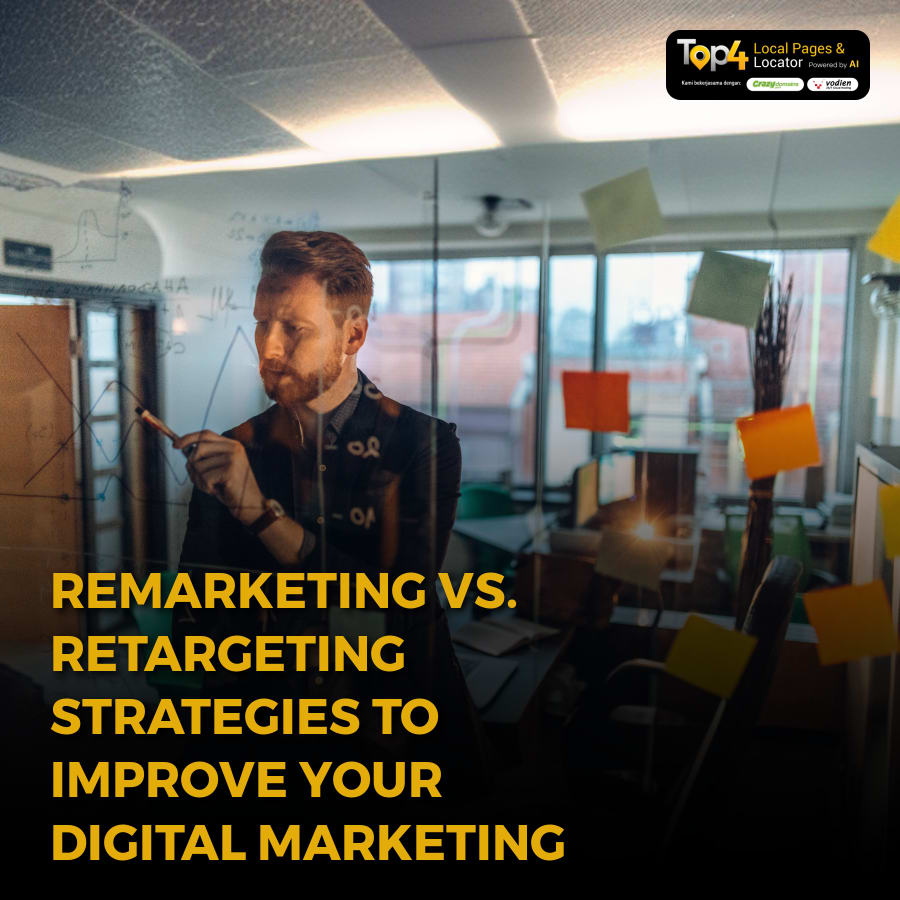Picture this: a potential customer visits your website, spends time browsing your products or services, and then leaves without making a purchase. What if I told you that this is a common scenario for many businesses? In fact, according to research, around 97% of people who visit a site for the first time leave without taking any action. The question is, how can you turn those lost opportunities into successful conversions? This is where the concepts of remarketing strategies and retargeting strategies come into play.
For many local businesses and franchise owners, understanding the subtle differences between remarketing and retargeting could mean the difference between stagnation and growth. While the terms are often used interchangeably, they entail different approaches to engaging potential customers. The pivotal question often asked by business owners is, "What is the difference between retargeting and remarketing?" By gaining clarity on these key digital marketing techniques, businesses can strategically enhance their advertising efforts to capture a greater audience share. Let's explore these concepts in greater detail, offering insights into how each can be effectively utilised to nurture customer relationships and drive sales.
Understanding Retargeting Strategies
Retargeting strategies primarily focus on re-engaging users who have interacted with your website but left without completing a desired action. Typically, this is done through paid advertisements on platforms such as Google Display Network and social media. These ads serve as gentle reminders to potential customers, encouraging them to revisit your website and complete their purchase.
The effectiveness of retargeting strategies lies in its precision. By using cookies or pixel-based tracking, advertisers can segment users based on their browsing behaviour and deliver tailored ads that resonate with each audience segment. For franchise owners, employing these strategies allows targeted outreach to users who are already familiar with your brand, thereby improving conversion rates.
Implementing retargeting involves defining the audience you wish to target and setting up specific criteria that trigger ad displays. By fine-tuning your approach, you can address specific visitor behaviours, such as cart abandonment or page visits, and deliver customised ad experiences that have a higher chance of yielding results.
Remarketing Strategies Explored
Remarketing strategies, on the other hand, often involve reaching out to past customers through email campaigns. This approach utilises databases of user information to remind previous purchasers about your business, offer them special deals, or inform them about new products. Remarketing campaigns intend to build ongoing relationships and increase customer loyalty over time.
For many local businesses, the strength of remarketing strategies lies in their ability to provide personalised communications that reinforce brand credibility. By analysing customer data, businesses can craft messages that address previous interactions or purchase history, creating a personalised touch that customers respond well to.
To establish a successful remarketing campaign, businesses should focus on compiling comprehensive and segmented lists of past customers. Craft value-driven emails that offer incentives like discounts or exclusive offers, and schedule them at optimal times to stay relevant and top-of-mind among your audience.
Remarketing vs Retargeting: Key Differences
In addressing the question, "What is the difference between retargeting and remarketing," it's vital to acknowledge their complementary roles in a robust marketing strategy. While retargeting focuses on paid ads and targets potential customers who haven’t converted, remarketing leans towards communication channels like emails to engage past customers.
The choice between using remarketing strategies and retargeting strategies depends on your business goals and the stage of the customer journey you aim to influence. Retargeting is a powerful tool for re-engaging recent visitors and guiding them towards conversion. In contrast, remarketing is more suited for nurturing long-term relationships with existing customers, ensuring they remain engaged and loyal over time.
For franchise owners, integrating both methods can create a comprehensive approach that covers various aspects of the customer cycle, from initial interest to establishing lasting loyalty. Understanding these differences allows for more informed decision-making and strategic allocation of marketing resources.
How to Choose the Right Strategy
Choosing between remarketing and retargeting requires evaluating your current audience engagement levels and specific business objectives. If your focus is on converting recent site visitors, then retargeting strategies may be most appropriate. Retargeting can be particularly beneficial in competitive local markets where user attention is fleeting.
Conversely, if you are looking to enhance customer retention and boost repeat sales, remarketing strategies could be more effective. This approach helps solidify relationships with your existing customer base, encouraging repeat business through targeted communications and exclusive content.
Balancing both strategies can provide a well-rounded marketing approach. By employing an analytics-driven methodology, you can measure the effectiveness of each strategy and make data-informed decisions that align with your business growth plans.
Conclusion
In the dynamic realm of digital marketing, differentiating between remarketing and retargeting is pivotal for local businesses and franchise owners. Both strategies hold significant potential for driving conversions and cultivating loyal customer bases, but the choice of which to utilise — or how to integrate both — should be informed by your unique business needs and objectives.
At Top4 Marketing, our expertise can help you craft a local marketing plan that aligns with your business goals and local community needs. Let us assist you in maximising your online strategy. Visit Top4 Marketing blog for more insights to elevate your business to new heights. Contact us today and start your journey towards local marketing success.


 SAUDI ARABIA
SAUDI ARABIA

























